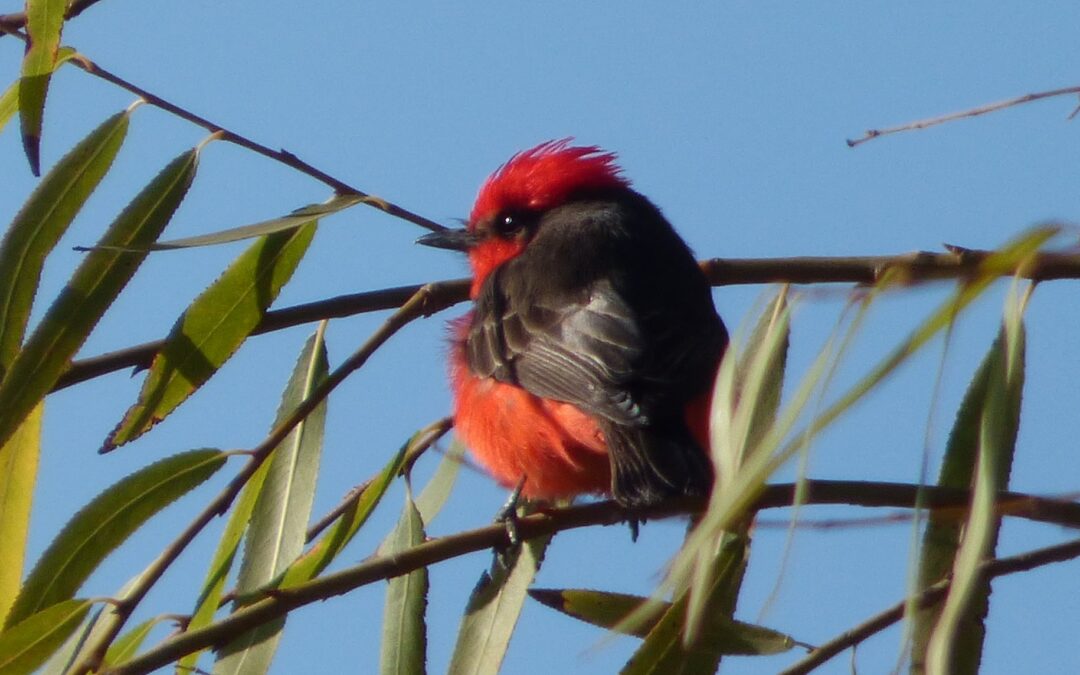Un pato brasilero nada airoso mientras el sol descubre los matices dorados de su plumaje y esas escondidas plumas verdes que lo hacen aún más hermoso. A centímetros, otro de ellos toma un poco de agua y lo que parece una pequeña loma de vegetación florida, no es más que un cúmulo de basura resumida en botellas plásticas, papel higiénico, latas y comida inservible.
Es justamente esto, lo que termina con la magia y nos revela que estas aves nadan en un curso de agua contaminada. Se trata de la quebrada El Monte que cruza importantes barrios de la ciudad de Tarija y que junto a las quebradas San Pedro, Torrecillas y Cabeza de Toro aporta por la ribera derecha al río Guadalquivir.
De madrugada o a altas horas de la noche, decenas de personas tiran su basura a estas aguas sin estimar las consecuencias. Sin embargo, ya en 2015 una auditoría de la Contraloría General del Estado reveló que cuando el Guadalquivir pasa por el municipio de Tarija y recibe las descargas de las quebradas Sosa, Sagredo, el Monte y San Pedro, además de la Víbora Negra, sus aguas entran al rango de calidad pésima.
Esta condición se mantiene luego de confluir con el río Tolomosa (de calidad media) y aunque no cambia el rango de calidad, el valor empeora al recibir las descargas de la quebrada Torrecillas y de la quebrada cabeza de Toro que transporta descargas industriales del matadero municipal y curtiembres.
Otro estudio sobre medio ambiente y contaminación en la ciudad de Tarija, realizado por el Centro de Investigación Estadística de la Universidad Privada Domingo Savio (UPDS), que aplicó mil encuestas, refiere que las quebradas son los lugares que presentan mayor contaminación en Tarija.
La belleza oculta en la quebrada El Monte
Pero al margen de la calidad del agua en la quebrada El Monte, durante todo el año se observa una biodiversidad que ante los ciegos ojos de todos convierte cada día el basural en su hogar. Cuervos de pantano, cigüeñuelas, gaviotas andinas, tero tero, pica buey, pato brasilero, pato chumuco y garzas se abren paso entre la basura, nadan, beben el agua, se zambullen y disfrutan de los primeros rayos del sol.
Muy próximos a ellos y al margen de la quebrada, en los árboles, buscando alimentarse están los infaltables horneros, las chulupias, los chiguancos, los celestinos, los naranjeros, los vinchuqueros, los tarajchis, los picaflores, pero también las ulinchas, las tortolitas, los tordos renegridos que nunca aprendieron a hacer nidos, los bientefues, las torcazitas y las golondrinas.
Todos los días estas aves “disfrutan” de las aguas contaminadas. ¿Hasta qué punto seguiremos infectando estos espacios?

La contaminación y el daño a la salud
Pero no sólo se afecta a la biodiversidad, los riesgos para la salud humana constituyen lo más preocupante respecto a la contaminación en las quebradas, así lo expuso el profesional en ingeniería química con doctorados en Ciencias Ambientales y Medio Ambiente, Richard Iván Medina.
“Esta época, como no hay corriente de agua, se acumula la basura de todo tipo, las quebradas son botaderos de la gente aledaña, cuando llega la quebrada se limpia con las primeras lluvias, pero luego vuelve la basura”, indicó.
Agrega que las campañas de educación ambiental son más importantes que las de limpieza, dado que los ciudadanos deben entender y aprender que los espacios, como las quebradas, no deben ser utilizados como lugares para desechar residuos.
“Tal vez se tendría que poner más carteles, se podría controlar en algo la situación en lo que se refiere a desechos sólidos, por otro lado, en cuanto a las aguas, me animo a decir que todas las quebradas y el río Guadalquivir, están contaminadas con aguas residuales domésticas, porque son de conexiones clandestinas que van contaminando el agua todo el año, solo que ahora se nota más porque no hay caudal”, refirió.

Las 4R son: Reducir, Reutilizar, Reciclar y Recuperar
Desde residuos plásticos, llantas, escombros e incluso animales muertos se pueden evidenciar en todas las quebradas de Cercado. Es la situación de la quebrada El Monte, Verdún o Gallinazo.
De acuerdo a expertos en el tema, será importante que la población reflexione sobre la importancia de no echar basura a las quebradas, pero también es clave que piense en las cuatro “r” del reciclaje. De esta manera es fundamental:
Reducir: Crear menos residuos de los que generamos.
Reutilizar: Cuando algo ya no nos sirve podemos darle un nuevo uso. Si está en buen estado puede ser útil para otra persona o podemos buscarle un nuevo uso antes de tirarlo a la basura.
Reciclar: Es importante convertir un residuo en un producto nuevo y diferente. Para eso es clave que en casa separemos los residuos y los depositemos en los contenedores adecuados.
Recuperar: Pero si un residuo no se puede evitar, reutilizar o reciclar, llega la importancia de recuperar.
Más aún, luego de seguir al pie de la letra todos estos consejos es fundamental sacar los desechos para el recojo del carro basurero.
Texto: Danitza Pamela Montaño
Fotos: Mateo Tapia
*La presente publicación ha sido elaborada con el apoyo financiero de la Unión Europea. Su contenido es responsabilidad exclusiva del proyecto “Alianzas para la gestión del agua y saneamiento” y no necesariamente refleja los puntos de vista de la Unión Europea.

